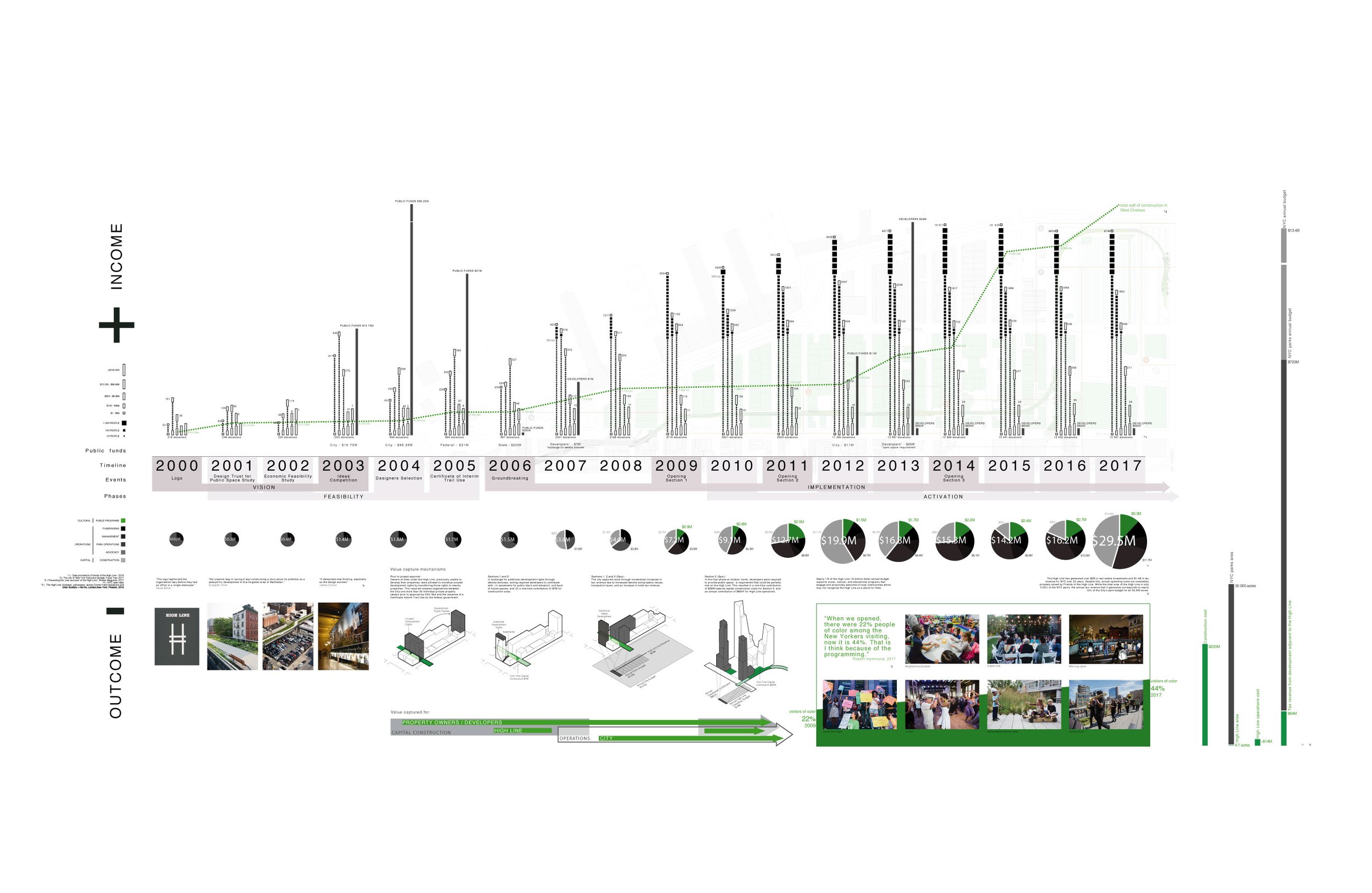The High Line: Activism and Infrastructure Exhibition
Date: 2019
Exhibition Location: Druker Design Gallery, Harvard Graduate School of Design
Curators: Stephen F. Gray and Caroline Filice Smith
Exhibition Team: Forrest Jessee (In memoriam), Dan Borelli, David Zimmerman-Stuart, Mariana Paisana
Curatorial Statement:
The 13th Veronica Rudge Green Prize in Urban Design recognizes the High Line as exemplar for the complex coordination of creative professionals, philanthropists, and policy makers by deeply committed community advocates. The Green Prize also recognizes Friends of the High Line for their unwavering commitment to improving the public realm through design excellence and for their capacity to continually reinvent the High Line in ways that support more inclusive public spaces — both in New York and across the globe.
The opening of the High Line in 2009 was neither the park’s first nor final achievement. Originally conceived in the early 20th century, the elevated rail was a response to public outcry over rail–related fatalities at street level. Over time, the High Line became increasingly peripheral to New Yorkers, if they noticed it at all, seen more as a decaying behemoth, a platform for vice, and a hindrance to progress than for its potential as a transformative public asset. Nearly ten years after the first section opened, the High Line’s re–emergence as a beloved and celebrated public space not only has transformed a neighborhood, it also has influenced how we approach and understand urban design on a global scale.
The evolving nature of cities situates the practice of urban design within much longer trajectories of urbanization than can be fully expressed or understood by a singular site, agent, or process. The High Line exists simultaneously as material, infrastructural, and object–based, and immaterial, agency–driven, and processes–oriented. Its influence extends far beyond the physical, temporal, and geographical space it occupies. Projects like the High Line can come into being only through an expanded practice of design — one that interweaves politics, policy, and public process into the design of the built environment. This exhibition explores these intersections of activism and infrastructure, unpacking the social, natural, and formal design components that make the High Line an exceptional urban design project.












